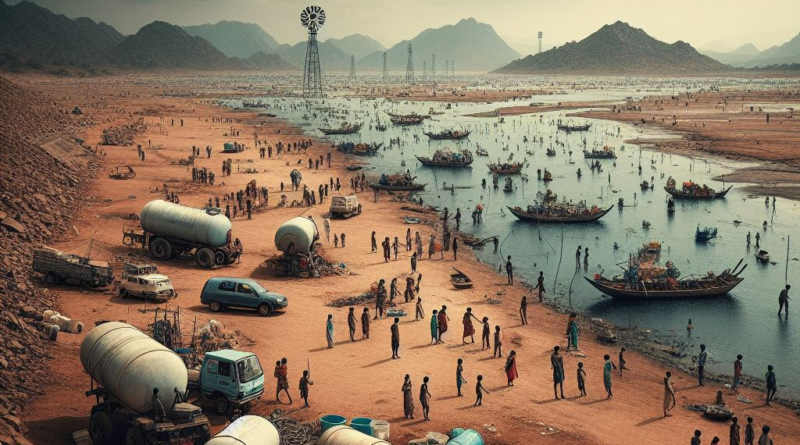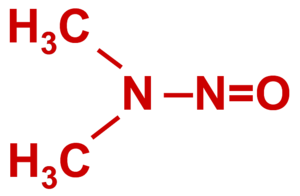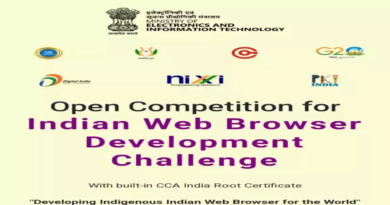Severe Water Crisis Grips Southern States of India| Ias Banenge
Context:
The southern states of India, including Karnataka, Tamil Nadu, Andhra Pradesh, and Telangana, are currently grappling with a severe water crisis. This situation has arisen due to alarmingly low water levels in major reservoirs across these regions. The dwindling water reserves pose serious challenges for agricultural activities, drinking water supply, and overall livelihoods of the residents. Urgent measures and sustainable water management strategies are crucially needed to address this pressing issue and ensure water security for the affected states.
Relevance:
GS I: Water Resources
READ MORE- About The Green Credit Programme
Dimensions of the Article:
- Current Water Crisis Situation in Southern States
- Reasons for Water Crisis in South India
- Implications of the Water Crisis in India
Current Water Crisis Situation in Southern States
Reservoir Levels
- Central Water Commission reports:
- Most major reservoirs in Karnataka, Tamil Nadu, Andhra Pradesh, and Telangana are filled to 25% or less of capacity.
- Dams like Tungabhadra and Nagarjuna Sagar are at 5% or less.
- Mettur dam and Srisailam are below 30% capacity.
- Southern region specifics:
- Overall reservoirs are at 23% capacity.
- This is notably lower than last year and the 10-year average.
- Exception in Kerala:
- Major dams in Kerala are at least 50% filled.
- Reservoirs like Idukki, Idamalayar, Kallada, and Kakki have better water levels.
Reasons for Water Crisis in South India
Rainfall Deficiency and El Niño Effect
- El Niño Impact:
- Warming of Pacific Ocean disrupts weather globally.
- Leads to reduced rainfall in specific regions.
- Monsoon and Post-Monsoon:
- Lower rainfall, delayed onset of monsoon.
- Post-monsoon (Oct-Dec 2023): Over 50% of regions had rainfall deficiency.
Global Warming and Temperature Rise
- Accelerates water evaporation rates.
- Increases drought conditions, raising water demand for various uses.
Groundwater Extraction
- Excessive use for irrigation in regions lacking surface water sources.
- Crops like rice, sugarcane, and cotton require high water amounts.
Water Pollution
- Industrial discharge, sewage, and waste dumping contaminate water sources.
- EMPRI study findings:
- 85% of Bengaluru’s water bodies are polluted by industrial and waste contaminants.
Inefficient Water Management
- Practices such as wastage, leakage, and unequal distribution worsen water scarcity.
Implications of the Water Crisis in India
Health Consequences
- Lack of safe drinking water leads to health issues like dehydration, infections, and diseases.
- Approximately 2 lakh people in India die annually due to insufficient water supply, as reported by NITI Aayog.
Population and Water Resources
- India comprises 18% of the global population but possesses water resources adequate for only 4% of its people, according to the World Bank.
- By 2023, an estimated 91 million Indians will lack access to safe water.
Environmental Impact
- Water scarcity threatens wildlife and disrupts natural habitats, impacting biodiversity and ecological balance.
- Wild animals often encroach upon human settlements seeking water, leading to conflicts and endangerment.
Agricultural Sector
- Agriculture, consuming about 80% of India’s water, faces challenges due to water scarcity.
- Reduced crop yields, compromised food security, and increased poverty among farmers are consequences.
Industrial and Economic Ramifications
- Water scarcity hampers industrial production, diminishes energy generation, and escalates water supply and treatment costs.
- Tourism, trade, and social welfare can also be negatively impacted.
- The World Bank’s 2016 report, ‘Climate Change, Water and Economy’, suggests that water-deficient countries could experience significant economic growth setbacks by 2050.
-Source: The Hindu




